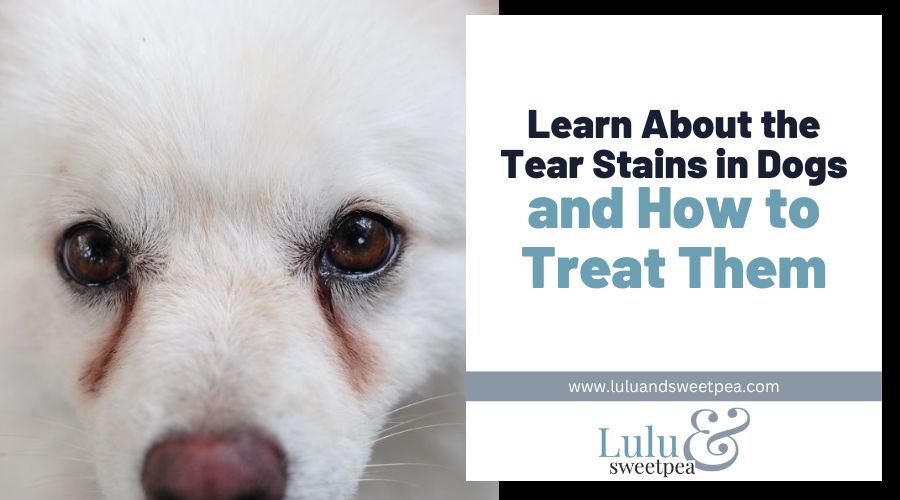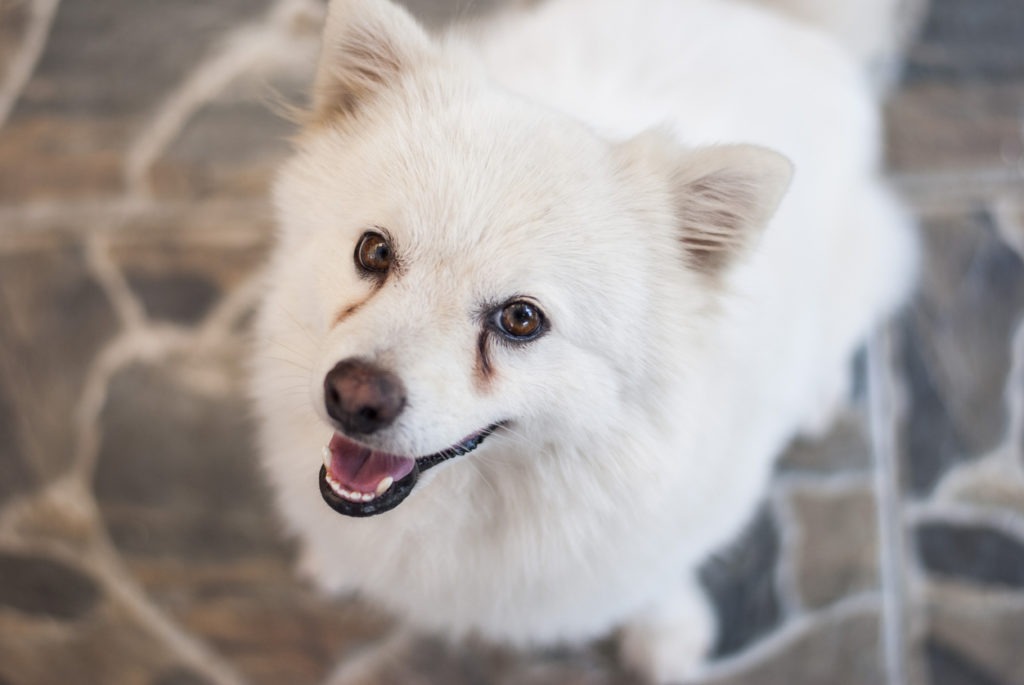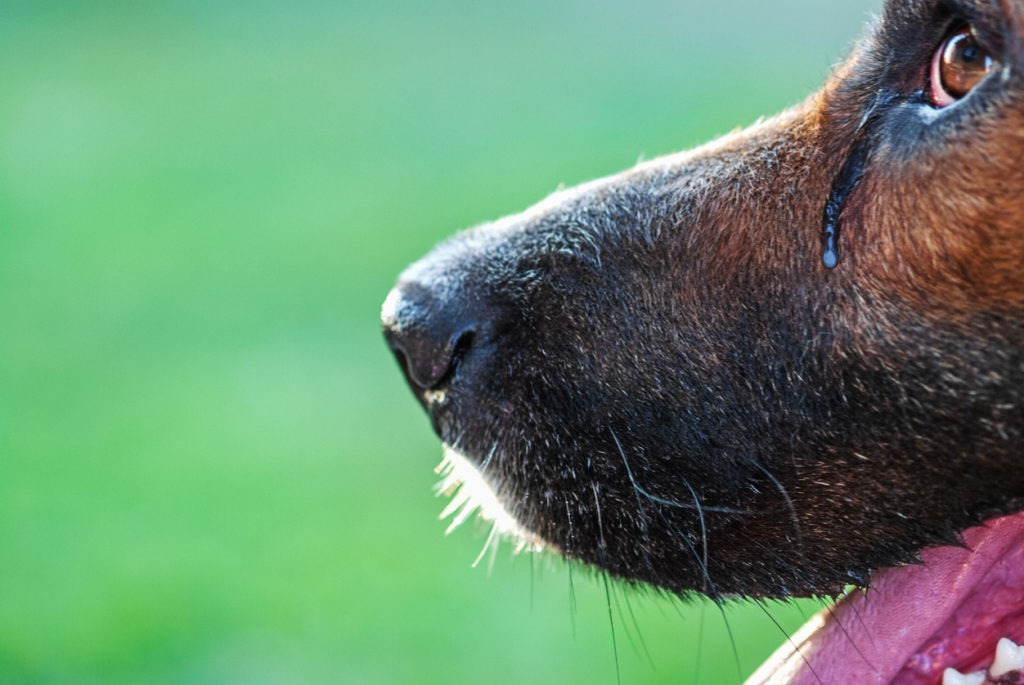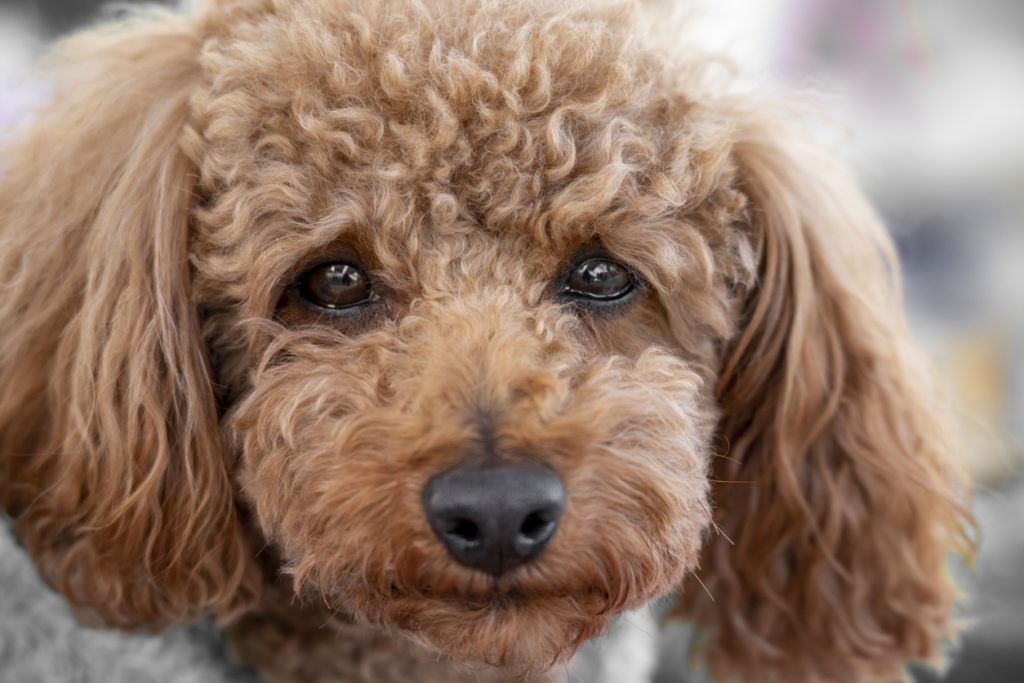Everyone has a significant problem with tears. Humans can simply clean their faces and wipe away tears. What would a dog do to wipe his face if he was crying? Well, we must also look after the hygiene and wellness of our dogs. Because our pets are a part of our family, we must treat them in the same manner that we treat humans.
You’ve probably wondered where the dark brown or reddish tear streaks under a dog’s eyes come from. Tear stains can mean many different reasons and are more common in some breeds than others. If your dog is exhibiting tear stains, it’s critical to consult a veterinarian or eye specialist to ascertain the cause and any potential therapies.
What are Tear Stains in Dogs?
Tears appear as dark brown or reddish stains under a dog’s eyes. There is occasionally, but not regularly, discharge visible in addition to the stains. They usually stand out more on dogs with white or light-colored fur. The stains are typically caused by epiphora, a condition that results from excessive tear production or an inability to drain tears effectively. Epiphora has several different origins and can be either acute or chronic.
Reddish stains begin to form under the eyes when porphyrin, a tear pigment, builds up. Due to the persistent moisture buildup from tears, brownish or rust-colored stains could be the result of a yeast infection on the skin around the eyes. Because epiphora can have a wide range of causes, it’s imperative that you speak with a veterinarian or specialist.
What Causes Tear Stains in Dogs?
Tear production may be excessive due to ocular discomfort or poor tear drainage in your dog’s eyes. Tears are produced by the eye to wash away irritants and keep it clean. Normally, tears then drain away through small openings near the eye and get directed down the throat. Epiphora is the outcome of deviations from this mechanism. The following medical conditions could lead to epiphora in dogs:
- Glaucoma: An accumulation of fluid in the eye that harms the optic nerve.
- Conjunctivitis: An inflammation of the eye’s conjunctiva that may cause mucus, pus, or discharge.
- Eye infections: Bacteria, viruses, parasites, or irritants like smoke or shampoo can all cause these.
- Irritant exposures: Dust, allergies, and secondhand smoke can make eyes swell with tears.
- Teething: Excessive crying may be a symptom of teething in pups.
- Ingrown eyelashes: Typically inherited, and more prevalent in some breeds.
- Inverted eyelid: When the eyelid is partially inverted, a condition known as entropion, the eyelashes rub against the eye. This damages the eyes and makes them itchy and scratchy.
- Shallow eye sockets: More typical in dogs with brachycephaly (dogs who have shorter snouts). When the eyelids don’t close completely and the eyes protrude, it hurts and is uncomfortable.
- Ear infection: The eye on the same side of the head may generate more tears than usual if one of the ears is infected.
- Large tear glands or small tear duct openings: More tears may be shed if your dog’s eyes are peculiar.
- Scarring: The capacity to drain tears may be hampered by scars from prior eye infections or injuries, leading to build-up.
- Improper diet and stress: The epiphora is affected by lifestyle. Consult your veterinarian to develop a balanced diet and make an effort to reduce anxiety.
- Allergies: As a defense mechanism against what it views as a threat, they can cause your dog’s eyes to shed an excessive amount of tears. These may be caused by using plastic food and water bowls, by seasonal factors, or by food-related issues.
How to Treat Dog Tear Stains?
Some FAQS by dog owners include “How to remove tear stains?” or “Is there a natural home solution I can use to remove the tear marks on my dog?”. Dog tear stains can be removed using some of the following techniques:
- Keep the hair as short as you can around your nose and eyes.
- Dry off and keep the face clean. Dog tear stains can be treated naturally at home with a warm towel and baby shampoo. It’s safe to use them to clean the region around the eyes. A variety of eyelid and eyelash cleaning pads can be used to clean the face and the area around the eyes. You can clean the area surrounding your eyes with contact lens solution, but not within them! The boric acid in the contact lens solution oxidizes the iron in the porphyrins, which may lighten the staining. After washing your face, always pat the area dry with a fresh towel to prevent the development of ulcerative dermatitis due to damp skin.
- Products with tylosin in them promise to treat or stops tear stains. The effects of tylosin fluctuate and are frequently only partially effective. Due to the possibility of medication resistance, there is discussion about whether tylosin should be used for cosmetic purposes. Tylosin’s inclusion in over-the-counter medicines that don’t usually list it as an ingredient or indicate how much is in the medication has drawn criticism as well.
- Many probiotic supplements also assert that they lessen tear stains.
- Your veterinarian should examine your dog if they have tear stains to see if there is an underlying eye condition that needs special care. Referral to an ophthalmologist may be part of the treatment plan if the tear staining is caused by conformation in order to rule out any underlying ocular diseases and to go over the potential surgical treatments.
Conclusion
Advice on how to handle the unpleasant and annoying issue of dog tear stains is frequently sought after by pet owners. If you search the term “tear staining” online, you will find a wide variety of products, concepts, and recommendations that make the staining-fixing or -prevention claims. Because there are so many treatments on the market, not every dog will respond to the same miracle remedy or strategy. To ensure your dog is more comfortable, there are several things you can do. The most crucial action is, however, to see your veterinarian.



